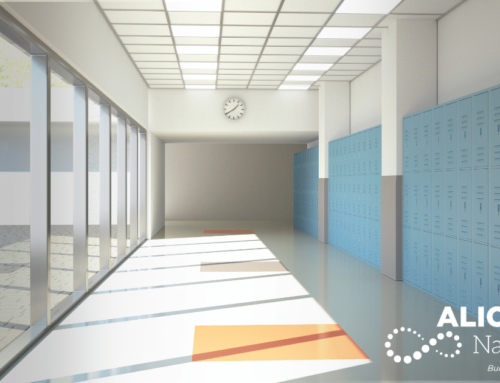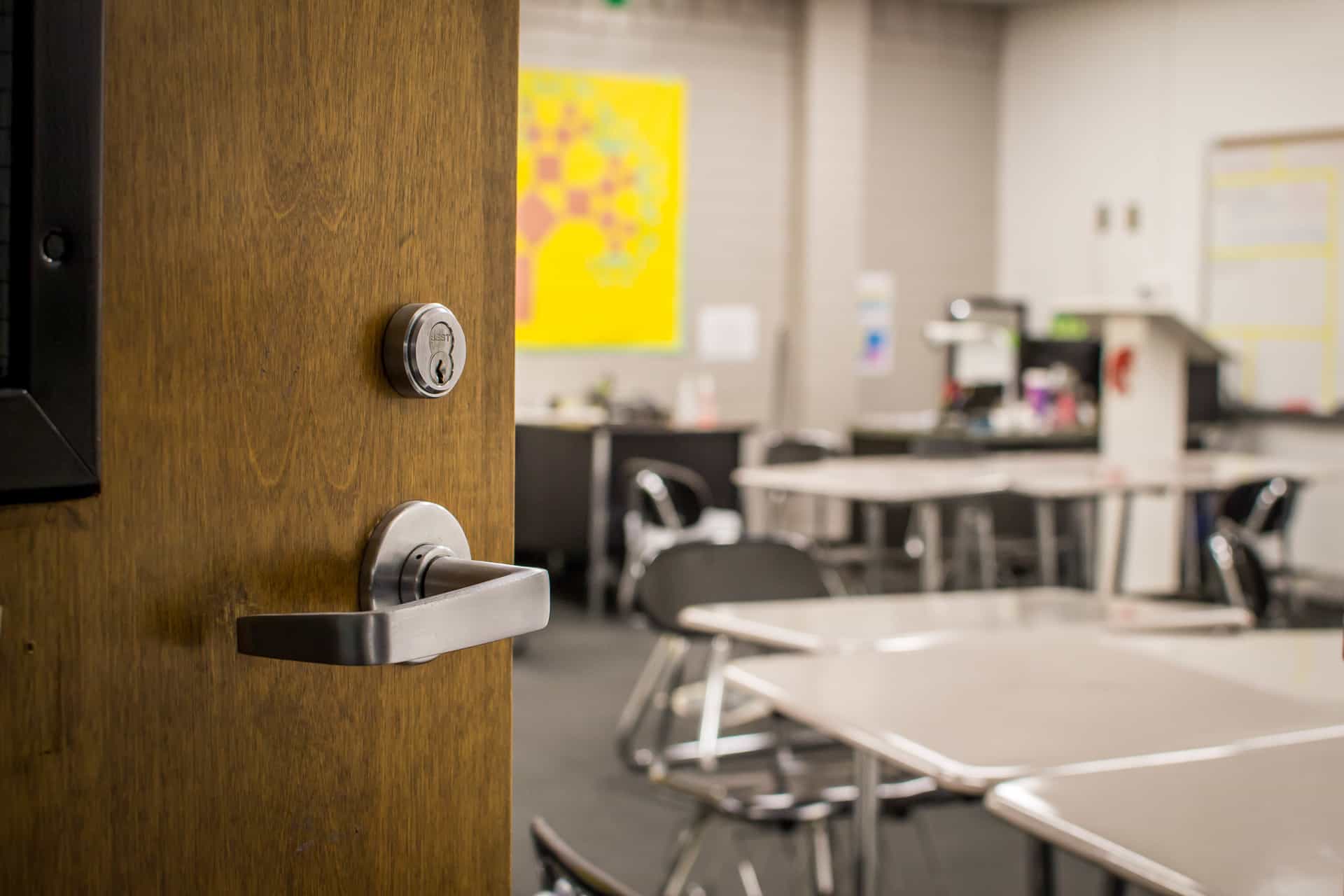
The Value of Classroom Safety
Setting up your classroom in a safer way is one of the easiest strategies to improve school safety. Here are seven simple classroom setup tips you can follow to build better situational awareness, create a plan in the event of an active threat, and ultimately, teach with more confidence.
As you look around your classroom, keep these important ALICE Training® school security tips in mind:

1. Know the layout of your school and the nearest exit to your classroom.
Why: Teachers need to be aware of the overall school layout, classroom numbers, and hallway names. In the moments of a violent intruder or active shooter, any information regarding the situation will be immensely beneficial to you in making survival decisions. However, if you are not familiar with the layout of the school, then information that you may receive during a crisis will not be helpful to you in making survival decisions. In this picture, you see the entrance of the school closest to our sample classroom.


2. Place your natural teaching position as far from the door as possible.
Why: Sadly, a trend that appears in the school shooting tragedies of the past is that the teachers, as leaders of the classroom, are typically the first target of an attack. Because of this fact, you should consider putting your natural teaching position farther away from the door, to help buy more time should an incident occur. Students are counting on you for instruction in these types of situations so it is imperative that you be able to advise them. Additionally, the farther you are from the violent intruder, the more difficult of a target that you become. Many classrooms have fixed features so you may be limited in how you can arrange your teaching area. See the picture here from the perspective of the doorway. The teacher’s main area of focus is now across the room from the door.


3. Pre-plan how you will barricade your room in case of a violent intruder.
Why: One of the best tips that you can work on while setting up your classroom is to assess the overall environment of the room and figure out the ways you can barricade the room. You can arrange your furniture in ways that facilitate quicker barricading. In this picture you see that a heavy file cabinet has been placed by the door.
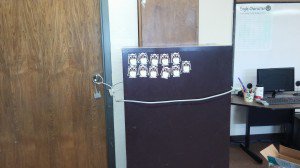

4. Create a path into the class.
Why: By creating a natural barrier on the way into the classroom, you build an obstacle that an intruder would have to work around to accomplish his mission. The goal of ALICE strategies in school safety training is to increase your chances of survival during a violent situation, and to do this, your job is to make it more difficult for the attacker to succeed. In this picture, you see how the teacher was able to create a path that would slow someone down from storming into the classroom.
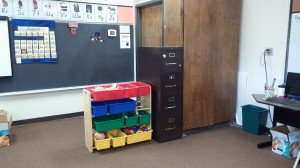

5. Observe the type of door leading into your classroom.
Why: Additionally, the type of the door that exists on your classroom impacts how you plan your room for a barricade. If your door opens in you should set up the room differently than if your door opens out. The type of door you have also impacts the way that you would barricaded the door. Does the door have glass in it or beside it? What type of handle does it have? Is it a solid door or a hollow core door? Does it have a hydraulic opening arm at the top? Does the door handle lock with a key and do you have to go outside to lock it? Is the door frame metal or wood? Is the door in good working condition? For this example, there is some good news and bad news with this particular door. On the positive side it is a solid wooden, outward opening door, however, it has no hydraulic-closing arm and has a round, push-button lock handle. A round handle is one of the hardest handles to secure and would need to be modified for optimal barricading.
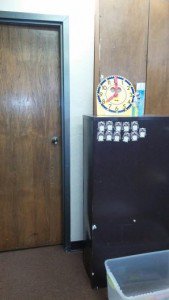

6. Know how to utilize your classroom windows.
Why: Teachers must also consider alternative ways of evacuation from their particular classrooms. If you have windows are you prepared to use them for evacuation purposes? How do your windows open? Can people fit through your windows? What floor are you on? Is it safe for people to drop from your windows? Prepare yourself for breaking the window if necessary. In this example, these particular windows do slide open. The teacher inspected the windows from the outside and, although not ideal, determined that if she could help each child out of the windows one at a time, they could drop to the ground without injury. However to do this, she would need to be able to stand on a sturdy piece of furniture, so she placed a table beside her reading table and this would be her place of deployment.


7. Keep your door locked when you have students in the classroom.
Why: While it can be an inconvenience to keep your door locked at all times, it is an immediate barrier that can exist if an attack begins just outside of your classroom. A locked door may buy you precious time to begin using another ALICE concept to increase chances of survival.
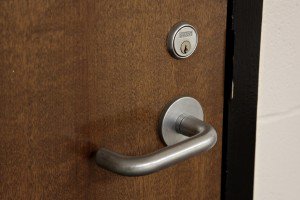
Your Students Deserve Safe Spaces to Learn – Do What You Can
These are things you can do quickly to improve safety for your students, and enhance your response in the event of a violent intruder. The application of these suggestions depends on the physical layout of your classroom, the resources available to you, and the level of authority you have to make changes in your classroom. We hope you find these strategies helpful. Be safe and have a great school year.
Download the full PDF to share with your school community.


